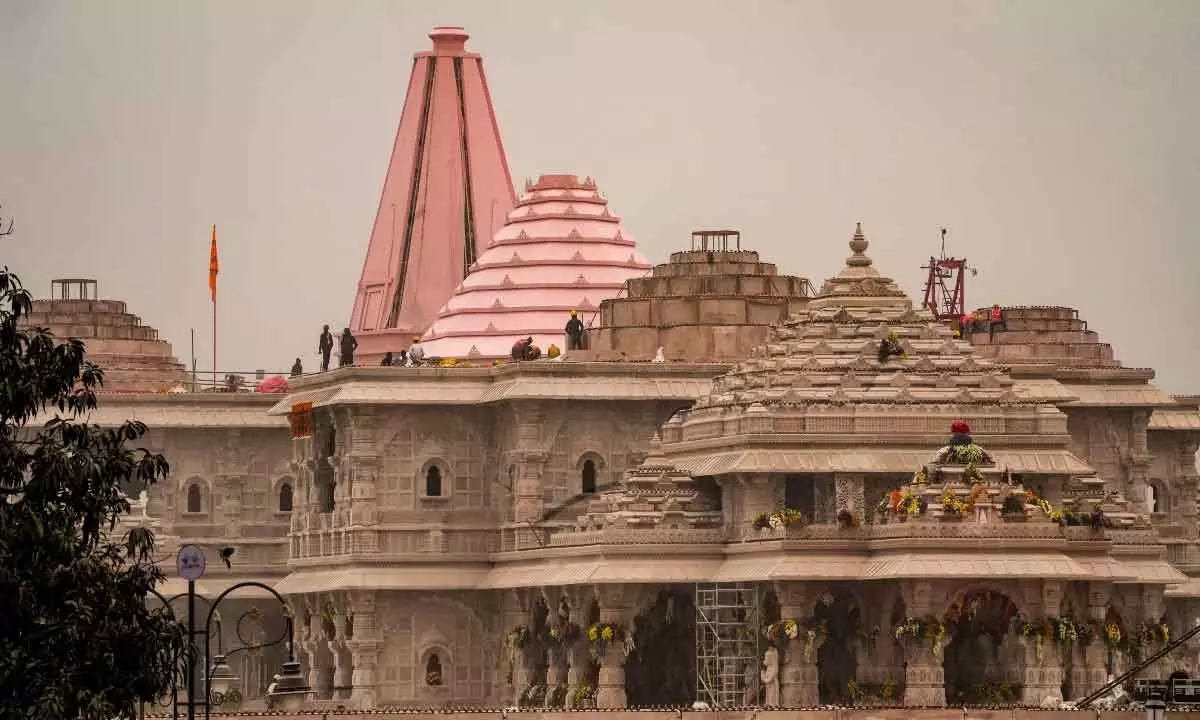Lord Ram’s Surya Tilak to shine in original form every Ram Navami
CSIR's innovative project unveiled at Indian International Science Festival
image for illustrative purpose

Guess what is unique about the Ram Navami this year and every year thereafter? You have guessed it right. The Ram temple, in its full-fledged form, will be unveiled for public on January 22. What next comes to your mind?
Well, the Surya Tilak of Lord Ram will be in its original form every Ram Navami, though for six minutes only. A replica of the Ram Temple in the CSIR exhibition pavilion is the centre of attraction of every visitor at the Indian International Science Festival in Faridabad, which got concluded on January 20.
To elaborate it, the forehead of Lord Ram’s statue in the temple at Ayodhya will be illuminated by the original sun ray. This ambitious project forms part of designing of the entire temple, made of Rajasthani sandstone without the use of any metal, which will be having its self life of 500 years.
No natural calamity, including earthquake can harm the structure during this period. The temple structure will be having length of 360 ft, width of 235 ft and height of 161 ft.
Not to mention, the Central Building Research Institute, Roorkee (CBRI), one of the oldest CSIR laboratories, has developed an opto-mechanical system using mirrors and pipes to help guide the sun rays to fall on the forehead of the deity on the Ram Navami – a day to commemorate the birth of Lord Rama.
Talking to Bizz Buzz, Dr Nawal Kishore, principal scientist, CBRI, Roorkee said, “We have worked on four parts for designing the temple. First of them was the vetting of foundation design, retaining wall and excavation scheme.
Secondly, seismic load of the structure so that it couldn’t get affected by earthquake for next several centuries.”
Thirdly, he went on, we performed structural analysis and design considering safety and architectural structural analysis. It has been ensured that the temple will not be affected by any earthquake for 250 years which is the normal cycle of a cyclone. For this, 3-D modelling has been done by the scientists for the temple. Finally, retaining wall structure’s health has been monitored.
There were several challenges which came in the way before the scientists in their job. Dr Chandan Swarup, Sebnior scientist, CBRI, said, “The foremost challenge before us was to find out what should be the parameters, and what should be the base for construction of the temple. Secondly, we had to ensure that there will be no use of iron or steel.”
The construction of the temple has been done in the joint collaboration of CSIR, National Geophysical Research Institute, Indian Institute of Technology, Madras and Optics and Allied Engineering. Besides, the organisations which are actively involved into the project, include Construction Committee Temple Trust, CB Sompura, Tata Consulting Engineers and Indian Institute of Astrophysics.

